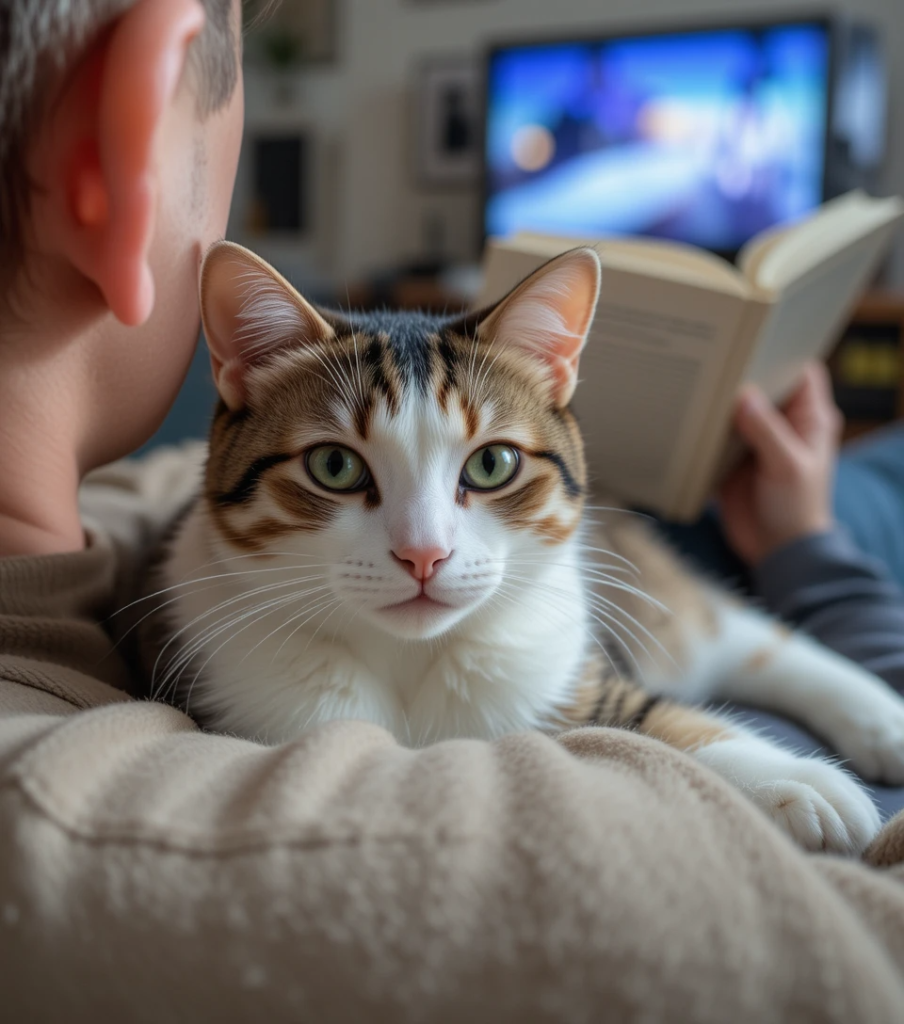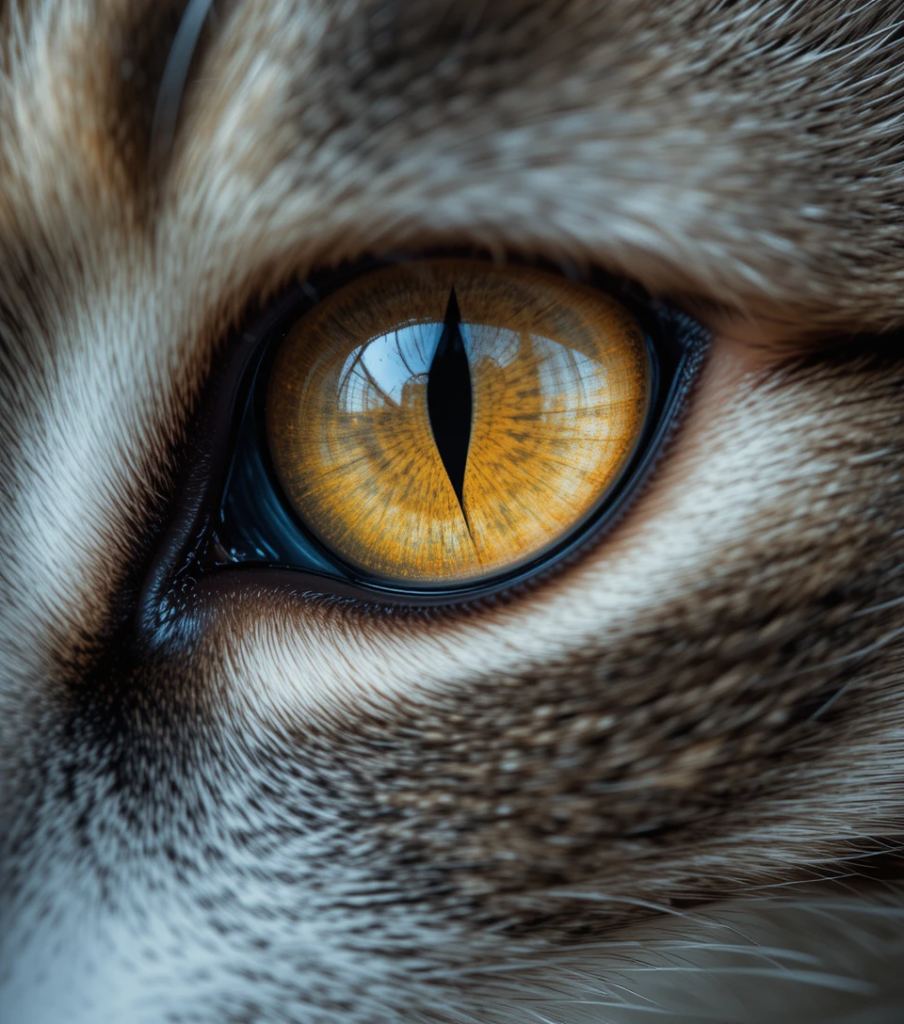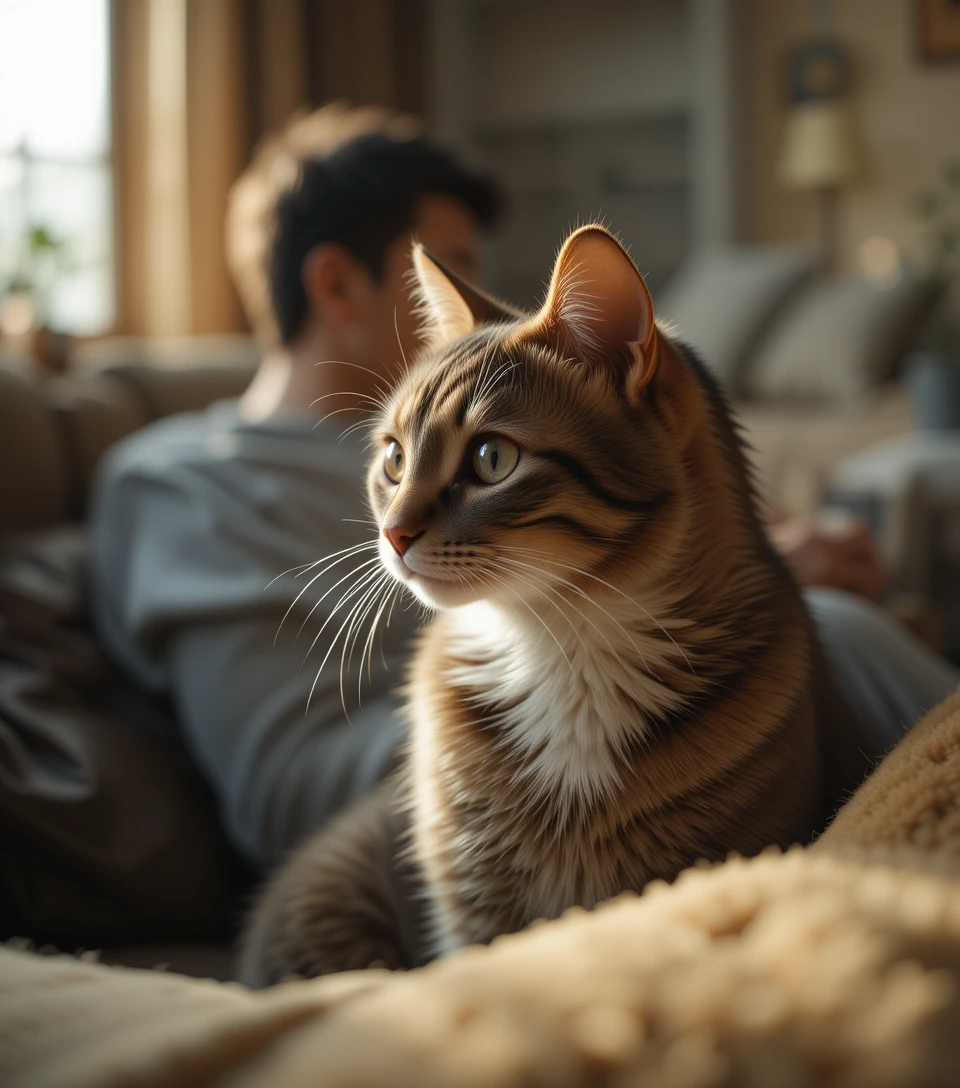Introduction: A Curious Gaze
You’ve caught your cat staring at you—again. Maybe it’s from across the room, the corner of the couch, or even right in your face. It’s intense, unwavering, and a little mysterious. If you’ve ever wondered, “Why does my cat stare at me like that?” — you’re not alone. Let’s uncover the loving truth behind those feline eyes.
Is It Normal for Cats to Stare at You?

Yes—completely normal! Staring is part of your cat’s natural behavior. As keen observers, cats use their eyes to gather information about their environment—and about you. It’s one of the many ways they engage with the world, especially with someone they trust.
Decoding the Stare: What Your Cat Might Be Telling You
Your cat’s stare can mean different things depending on the context:
– Affection: Prolonged eye contact often signals comfort and love.
– Curiosity: You’re doing something that caught their interest.
– Hunger or Needs: The “feed me” stare is a classic.
– Territorial Guarding: They’re keeping an eye on their space—you included.
Cats rarely stare aggressively unless provoked. More often, it’s a gentle form of feline curiosity or affection.
The Science Behind the Cat Gaze

Feline behaviorists suggest that cats rely heavily on body language—and eyes are a powerful part of that. Unlike humans, cats don’t stare for dominance; they stare to observe or connect. Scientific studies indicate that a cat’s gaze can activate bonding-related hormones like oxytocin in both the cat and its human.
How Cats Show Love Without Words
Your cat’s eyes are one of their most expressive features:
– Slow blinking: It’s the feline equivalent of a kiss.
– Unblinking gaze: A sign of trust—your cat feels safe.
– Eye contact with following: Your cat might want attention, play, or cuddles.
Try slow-blinking back at your cat—it’s a subtle way to tell them you love them too.
When to Be Concerned About Staring
While most staring is harmless, pay attention to these signs:
– Dilated pupils
– Tense body posture
– Unusual vocalizations
– Lack of blinking
These could suggest stress, anxiety, or even a medical issue. If the staring feels intense or comes with other changes in behavior, consult your vet.
How You Should Respond to a Staring Cat
Responding correctly can help deepen your bond:
– Return a slow blink
– Speak gently or offer affection
– Check if they want something (food, play, cuddles)
Avoid staring too intently if they seem startled—it can be intimidating.
Does Breed or Personality Matter?
Absolutely! Some breeds are naturally more observant or social:
– Siamese and Bengal cats: More prone to stare and follow.
– Maine Coons: Gentle giants who often observe quietly.
– Shy cats: May stare from afar to assess safety.
Each cat has its own unique personality that shapes how and why it stares.
Strengthening the Bond With Your Cat
Use staring as an opportunity:
– Engage in interactive play.
– Offer treats during quiet bonding time.
– Practice slow-blink exchanges regularly.
These small rituals help nurture your relationship and build trust.
Conclusion: Eye Contact as a Window Into Their Heart
A cat’s stare may seem mysterious, but more often than not, it’s filled with affection, curiosity, and trust. Far from being eerie, it’s their way of saying, “I see you, and I like you.”
So next time your feline friend locks eyes with you, smile back—or even better, give them a slow blink.
10 FAQs About Cat Staring Behavior
1. Q: Why does my cat stare at me without blinking?**
This is often a sign of trust or deep focus. Cats don’t always blink as frequently as humans.
2. Q: Is my cat trying to communicate with me by staring?**
Yes—staring is a nonverbal way of expressing curiosity, affection, or a need.
3. Q: What does it mean when my cat stares while purring?**
This usually signals pure contentment and emotional closeness.
4. Q: Can staring be a sign of affection from my cat?**
Definitely. Especially when combined with relaxed body language and slow blinking.
5. Q: Should I stare back at my cat?**
A soft, slow blink is better—it’s perceived as friendly. A hard stare can feel threatening.
6. Q: Does my cat think I’m a threat when it stares?**
Not if its body language is relaxed. Defensive or aggressive staring is rare in calm cats.
7. Q: Why does my cat stare at me while I sleep?**
Cats often watch over their humans, out of affection or routine observation.
8. Q: Can staring be a sign of illness or discomfort?**
If staring is paired with odd behavior or physical symptoms, consult a vet.
9. Q: Do certain cat breeds stare more than others?**
Yes, breeds like Siamese or Burmese are known for their strong eye contact and social behavior.
10. Q: How can I tell the difference between a loving stare and an aggressive one?**
Look at the whole body: relaxed posture = love; stiff body, ears back = possible stress or fear.

